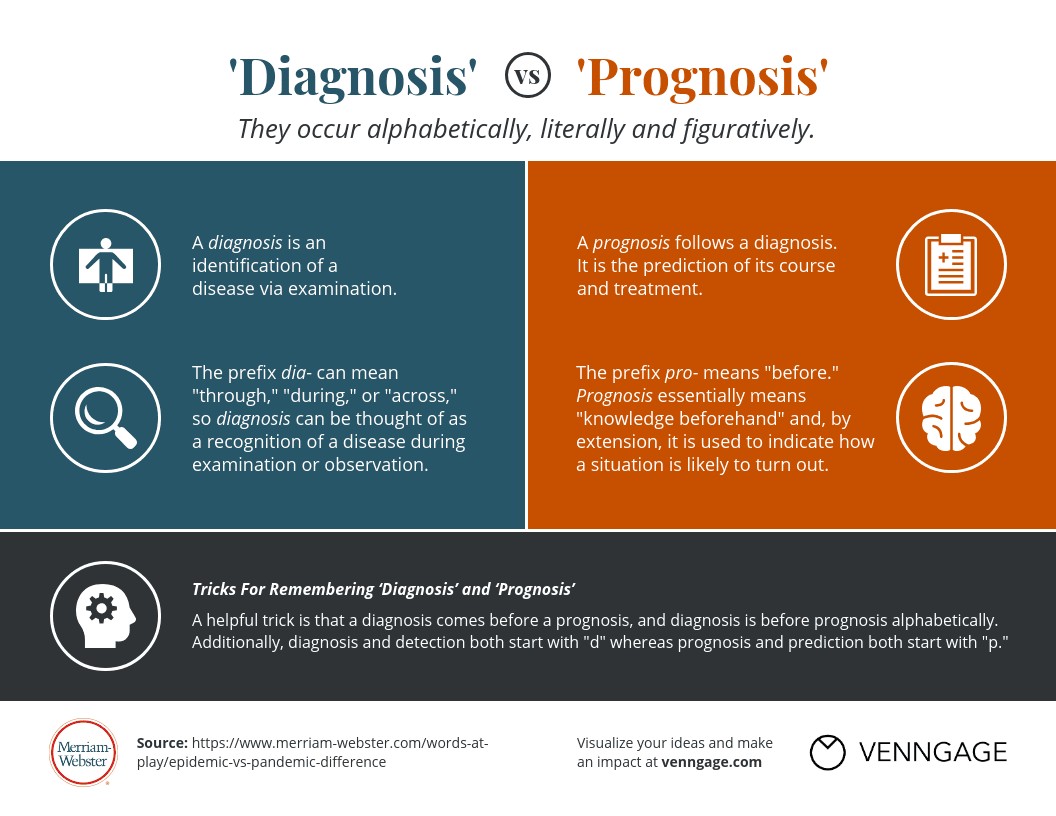Navigating the world of car repair can often feel like learning a new language. Terms like “diagnosis” and “prognosis” are frequently used by mechanics, and understanding the difference between them is crucial for any car owner. While these words might sound similar and are sometimes confused, especially when your vehicle is acting up, they represent distinct stages in understanding and addressing car problems. Let’s break down what each term means and why they are both vital in automotive care.
Decoding ‘Diagnosis’ and ‘Prognosis’: Rooted in Knowledge
Both “diagnosis” and “prognosis” have origins in ancient Greek, drawing from the root word gnosis, meaning “knowledge.” This shared root is why they can seem related, but the prefixes attached to gnosis – “dia-” and “pro-” – give each word its distinct meaning. Understanding these prefixes is key to grasping the difference between diagnosis and prognosis in the context of car repair, and beyond.
Automotive Diagnosis: Identifying the Current Problem
In automotive terms, diagnosis is the process of identifying the specific problem affecting your vehicle right now. It’s about pinpointing what’s wrong based on a thorough examination. Think of it as detective work for your car. Mechanics use a variety of tools and techniques to perform a diagnosis, including:
- Visual Inspections: Checking for obvious issues like leaks, worn tires, or damaged parts.
- Diagnostic Scanners: Using electronic tools like those we specialize in at xentrydiagnosis.store to read error codes from your car’s computer system. These codes provide valuable clues about potential problems within various systems like the engine, transmission, or braking system.
- Performance Tests: Assessing how different parts of your car are functioning under various conditions. This could involve checking engine compression, testing electrical circuits, or evaluating brake performance.
- Sensory Input: Experienced mechanics also rely on their senses – listening for unusual noises, smelling for burning odors, and feeling for vibrations – to gather diagnostic information.
The goal of a diagnosis is to answer the question: “What is currently wrong with this vehicle?” For example, a diagnosis might reveal that your car has a faulty oxygen sensor, a worn-out brake pad, or a coolant leak. A precise diagnosis is the foundation for effective car repair.
 Mechanic using diagnostic tool
Mechanic using diagnostic tool
Automotive Prognosis: Predicting the Road Ahead
Once a diagnosis has been made, the next step is often a prognosis. In car repair, a prognosis is a prediction of how the diagnosed issue is likely to progress and what the repair process will entail. It looks ahead to answer questions like:
- What is the likely course of this problem if left unaddressed? Will it get worse quickly? Will it affect other parts of the car?
- What repairs are needed to fix the problem? What parts and labor will be involved?
- What is the estimated cost of the repair?
- How long will the repair take?
- What is the expected outcome after the repair? Will the problem be fully resolved, or are there potential long-term implications?
A prognosis is based on the mechanic’s expertise, experience with similar issues, and understanding of vehicle mechanics. For instance, if the diagnosis is a worn timing belt, the prognosis might include a prediction that the belt could break soon, potentially causing serious engine damage. The prognosis would then outline the necessary timing belt replacement, estimate the cost and time involved, and assure you that replacing the belt should resolve the immediate risk.
Diagnosis Before Prognosis: The Order Matters
It’s essential to understand that diagnosis always comes before prognosis. You can’t predict the future course of a car problem or plan a repair until you know exactly what the problem is. Think of it like this: you need to diagnose the illness before you can give a prognosis about recovery.
In the automotive context, this means a mechanic needs to complete a thorough diagnostic process before they can provide you with an accurate prognosis for repair costs, timelines, and outcomes. Be wary of any mechanic who offers a prognosis without first performing a proper diagnosis.
Remembering the Difference: D Before P, Problem Before Prediction
A simple mnemonic can help you keep “diagnosis” and “prognosis” straight:
- Diagnosis comes before Prognosis in the alphabet, and Diagnosis deals with the Detected problem Directly (right now).
- Prognosis is a Prediction of what will happen Post-diagnosis and what the Path to repair will be.
Understanding the distinction between diagnosis and prognosis empowers you to communicate more effectively with your mechanic, understand the repair process better, and make informed decisions about your car’s maintenance. And at xentrydiagnosis.store, we’re committed to providing the tools and knowledge to help you and automotive professionals achieve accurate diagnoses, setting the stage for effective repairs and clear prognoses.